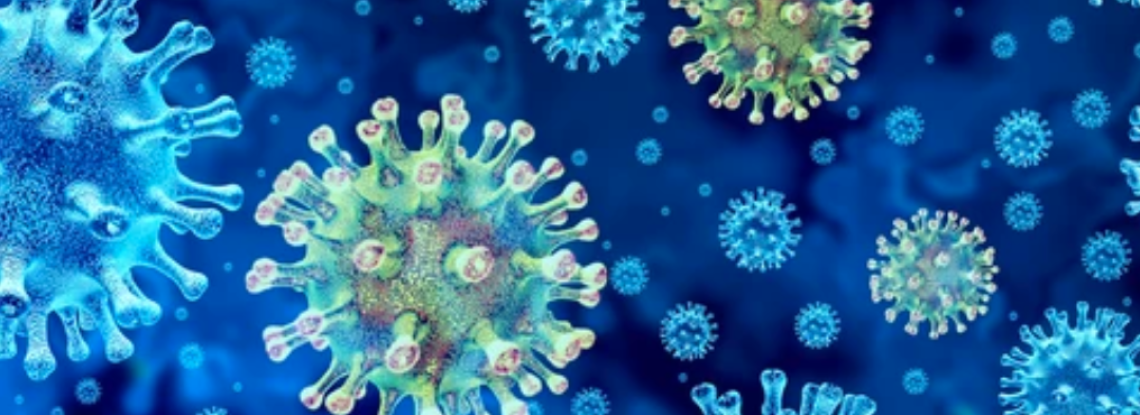We have all heard about the new COVID-19 variant (B.1.1.7) that is spreading rapidly in the South of England and has been found in Denmark, the Netherlands, Italy and Australia. It is very likely that this variant is already present in many other countries at low levels. There has been much speculation about this variant, but what is a ‘viral variant’, what is different about this variant and how will it impact our ability to control the virus?
As viruses reproduce, their genome is replicated in a process that often introduces errors or mutations. A virus with these mutations (one or more) would be a variant. If enough of these mutations accumulate such that the virus behaves very differently (e.g. evading antibodies or the immune system), then we have a new virus strain. At present, we only have one strain of the SARS-CoV-2 virus but we have a lot of variants.
Most of these variants have mutations that do not change how the virus behaves or the disease it causes. Occasionally though, we will have a variant with different behaviour. Early in the pandemic we saw variants emerge with the D614G mutation in the Spike protein. This mutation increased the viral transmissibility and enabled the virus to spread a little better/faster. Because of the increased spread, by March 2020, this variant was the main form of the virus seen. However, this mutation did not change the disease or make the infections more deadly.
Similarly, the new UK variant of the virus is reported to be more transmissible, but there is no evidence that it is more dangerous for those that get infected. What is unusual about this variant is that 17 different mutations were found in the virus, whereas most variants slowly evolve over time as additional mutations occur. It is thought that this new variant may have evolved in an extended infection of an immuno-compromised individual in September, though that is not known for sure.
What is known is that the variant contains several mutations that enhance the binding of the viral Spike protein to its human receptor, ACE2 (just like with the previous D614G variant) and increase the ability of the virus to infect human cells (P681H mutation). These mutations include the N501Y mutation that has been reported in South Africa as causing higher viral loads (amount of virus in your body during an infection) and increased virus transmission. In the UK, this variant also seems to be associated with higher viral loads and 71% faster spread through the population. It is currently unknown if the mutations in this variant are causing the faster spread or if this variant just happened to emerge at the right place and the right time for transmission (i.e. the virus may be spreading well simply because cases are rising rapidly in southern England, where the virus first emerged). However, as some of the mutations (e.g. N501Y) are known to affect receptor binding, it is likely the variant is actually more transmissible.
An additional concern is that the mutations may affect how the immune system responds to the virus. The variant has the Y453F mutation and a deletion of two amino acids in the Spike protein (69-70del) that may affect how effectively the immune system recognizes the virus (for people who have already been infected). This effect on the antibody response has been speculated but is not proven and may not end up being true. It is far too early to say if these mutations will affect how well the vaccines work, but even if they do have an impact, in all likelihood the vaccine will still offer significant protection. The experiments to assess antibody responses to this new variant are on-going and we should have more understanding in the coming days to weeks.
SARS-CoV-2 constantly mutates and the longer it continues to spread, the greater the chances of a mutation emerging that changes how the virus behaves. This UK variant is not a game changer and will not significantly impair our ability to control the pandemic. However, this variant is a wakeup call, that we need to stop the spread of the virus now. A vaccine will significantly help our response, but it will be many months before one is widely available and we cannot wait to control the virus. The longer we wait the more lives lost, health and livelihoods impacted and the greater the chances of a variant emerging that does impact our ability to stop the virus. The good news is that we don’t have to wait, we know what to do and all of our safe actions will also work on this new variant. We need communities to strive for zero COVID, reducing and eliminating local virus transmission through the combination of: personal precautions (masks, social distancing, hand washing), public health measures (mass testing and contact tracing with quarantine), social support and regulatory actions (travel restrictions and stay-at-home orders, where necessary). The closer a community gets to zero COVID, the easier it will be to identify new cases and stop their spread, even if new variants emerge. The stronger we act now, the safer we’ll stay.
Article written by Dr Jeremy Rossman for Research Aid Networks


